The remarkable life of Alexandrine and Lucien Bonaparte: from aristocratic beginnings to Princes of Canino amidst political turmoil and archaeological discoveries at Vulci
Viterbo, Italy
Marie Laurence Charlotte Louise Alexandrine de Bleschamp (1778–1855), born in Calais, was a French aristocrat renowned for her exceptional qualities. In 1798, she married the banker Jean François Hippolyte Jouberthon de Vanbertie (1763–1802), thereby acquiring the social title of Madame Jouberthon. Widowed by 1802, she became the second wife of Lucien Bonaparte, Napoleon I’s younger brother, in 1803, thus entering the inner circle of the French Imperial family.
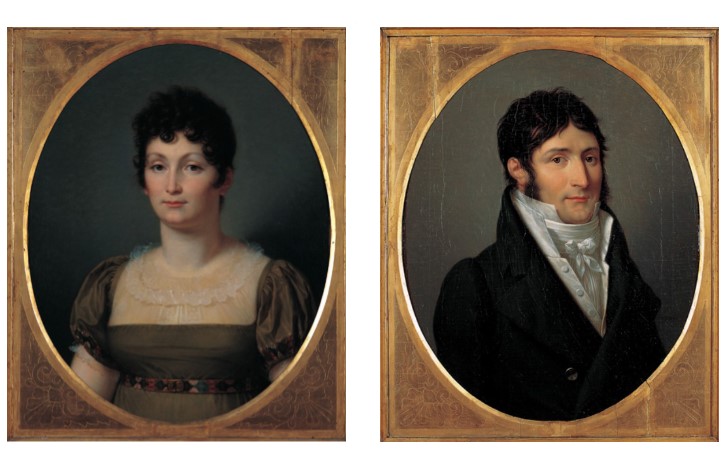
Alexandrine de Bleschamp and Lucien Bonaparte by François Xavier Fabre, 1808. Napoleon Museum in Rome
Lucien Bonaparte led an adventurous life from a young age. As Napoleon himself noted: "Luciano had an adventurous youth: at the age of 15 he was brought to France by Mr. Semonville, who soon made him a zealous revolutionary, and an ardent clubber..."
During the Directory and the Consulate, Lucien held significant political power. However, his independent and rebellious nature frequently brought him into conflict with his older brother. His insistence on marrying women of his own choosing, against the Emperor's wishes for politically advantageous alliances, ultimately led to his exclusion from the line of succession and a life of exile.
In 1800, his first wife, Christine Boyer, died from a prolonged illness while expecting their third child. Shortly thereafter, Napoleon appointed him ambassador to Spain in an effort to build a productive collaboration between the two nations.

The model of the Sanctuary of Hercules, Tivoli
In 1802, Lucien returned to Paris and met the young widow Alexandrine de Bleschamp, who was mother to a young child. That same year, he purchased what was then believed to be the Villa of Maecenas in Tivoli.
He transformed the site into a cannon foundry, building an industrial complex on the Tiburtino hill near the ancient Via Tiburtina. Ferrous material from Elba Island (approximately 340 km away) was processed and manufactured there.
It was not until later that the ruins were correctly identified as the Sanctuary of Hercules Victor on the outskirts of Tivoli, not Maecenas's villa. Built in the mid-2nd century BCE, this monumental five-story complex spanned three hectares, with lower levels for commerce and upper levels for worship. Over centuries, it evolved into an industrial site, powered by hydraulic energy from a nearby Roman aqueduct. In 1612, Pope Paul V converted it into a weapons factory for the Church. It served as a powder magazine in the 17th century and was again a weapons factory under Pope Pius VI in 1795.
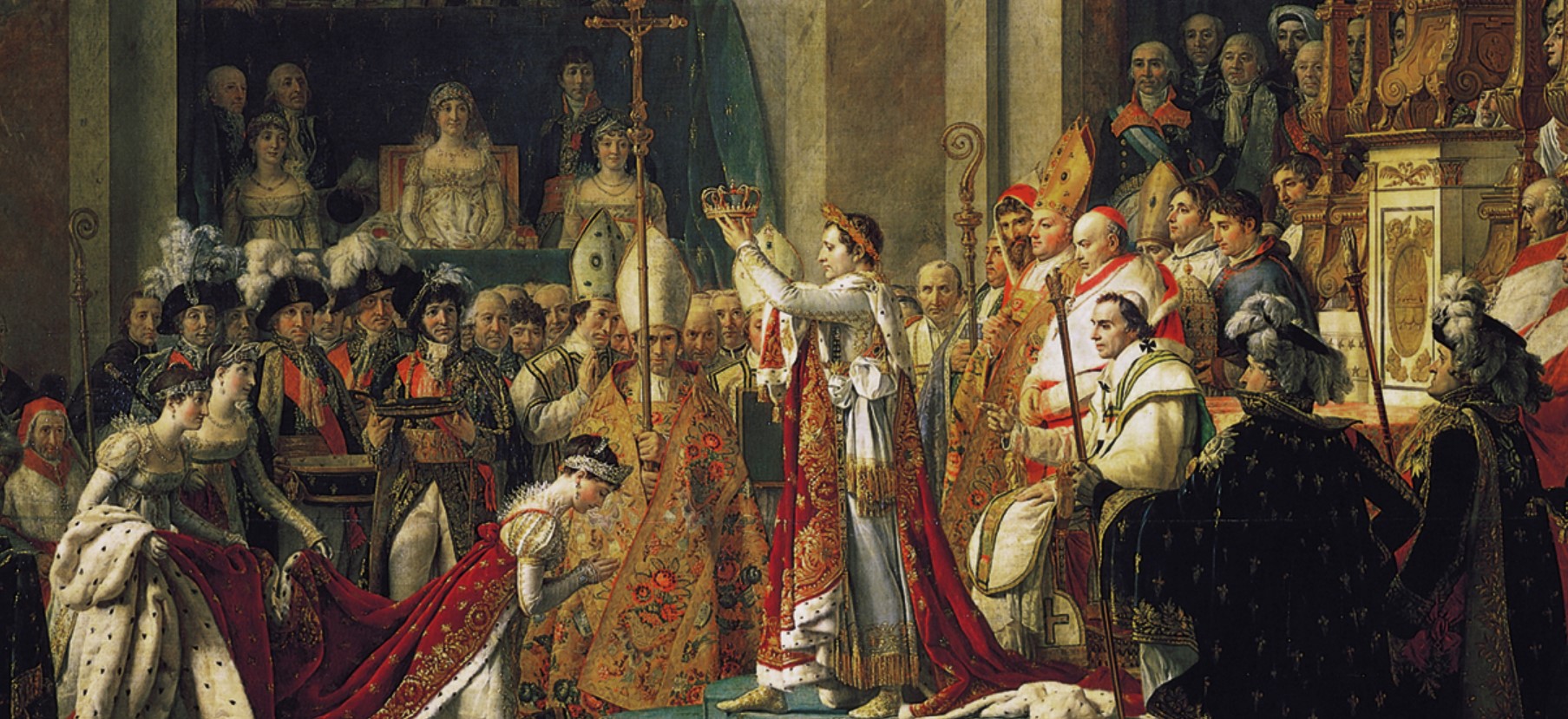
A detail of Coronation of Napoleon I, by Jacques-Louis David (1805).
In 1803, Alexandrine and Lucien celebrated the birth of their first child and were married secretly. The Bonaparte family was kept unaware of the union, as Napoleon had planned a strategic marriage for his brother. This act of defiance led to Lucien's exclusion from one of the era's most significant events.
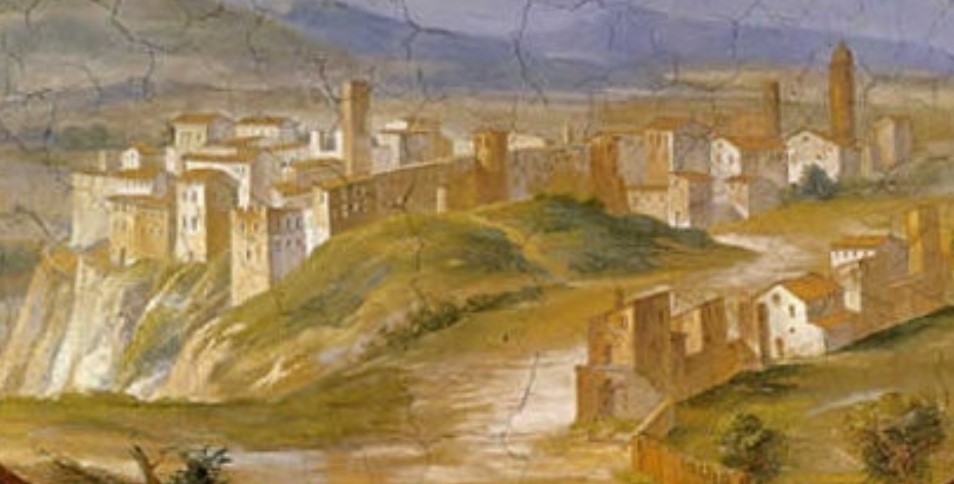
Canino in an ancient fresco.
Lucien was notably absent from Napoleon's coronation on December 2, 1804, in Paris, an event attended by 12,000 guests. It was during this ceremony that Napoleon famously took the crown from Pope Pius VII and placed it on his own head, symbolizing his rejection of the Pope's authority. Ironically, this same pope would later repeatedly assist Lucien in his economic difficulties.
Stripped of all hereditary rights and forced into exile, the rift between the brothers became irreparable. Lucien, feeling profoundly misunderstood, declared:
I honor him [Napoleon I], I respect him, I admire him as head of government, I no longer love him as a brother.
— Lucien Bonaparte
In 1804, Lucien sought refuge in Italy, settling near Rome where he formed a friendship with Pope Pius VII.
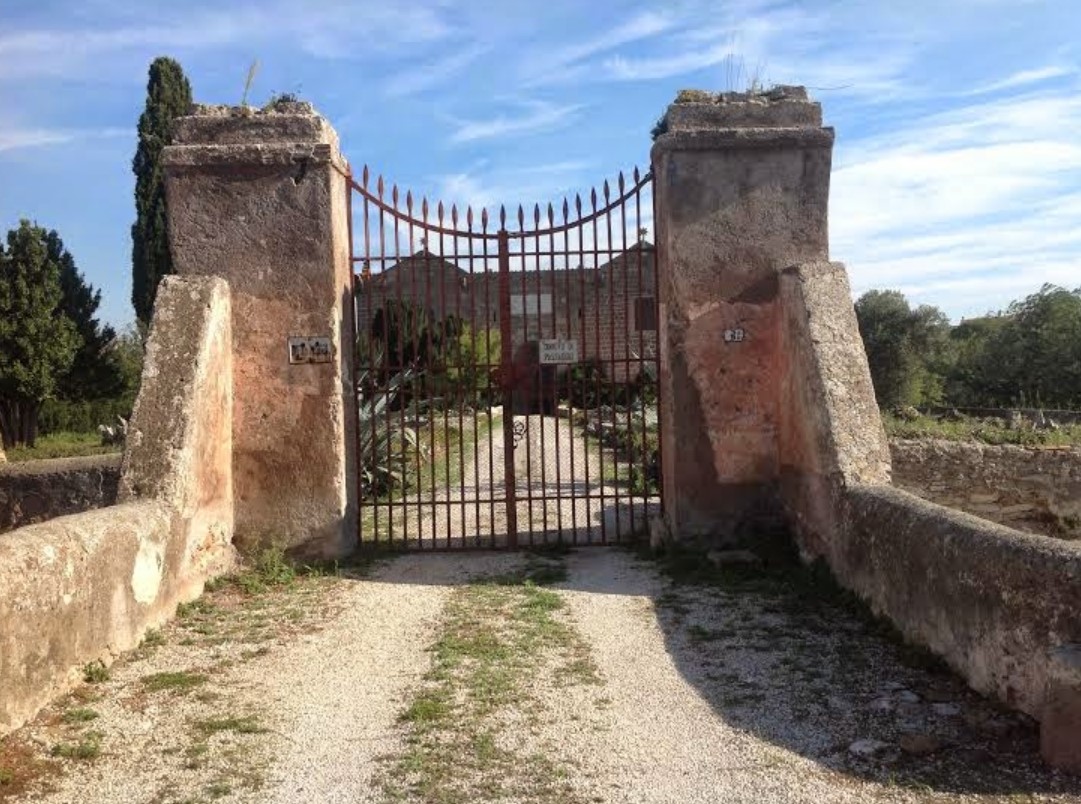
Castle of Musignano, Montalto di Castro (Viterbo)
In 1806, he began negotiations to purchase the wild and harsh fiefdom of Canino near Viterbo, comprising some 8,000 hectares of land. Its isolation, summer malaria, and distance from civilization appealed to his contemplative nature, offering a world removed from the upheavals his brother was causing across Europe.
Among the purchased properties was "la Ferriera," an ironworks with a furnace for producing cast iron. Using iron from Elba (now about 210 km away), Lucien became one of the leading iron industrialists in the Papal States in the early 19th century. This acquisition solidified his integration into the Roman patriciate. In 1808, he bought the Apostolic Chamber's lands in Canino, settled at the Castle of Musignano, and was later granted the title of Prince of Canino by the pope.
In 1809, when the Papal States were annexed to the French Empire, their mother, Letizia Bonaparte, attempted to reconcile her sons, but failed. Lucien subsequently attempted to flee to the United States but was captured by the British off the coast of Sardinia in 1810.
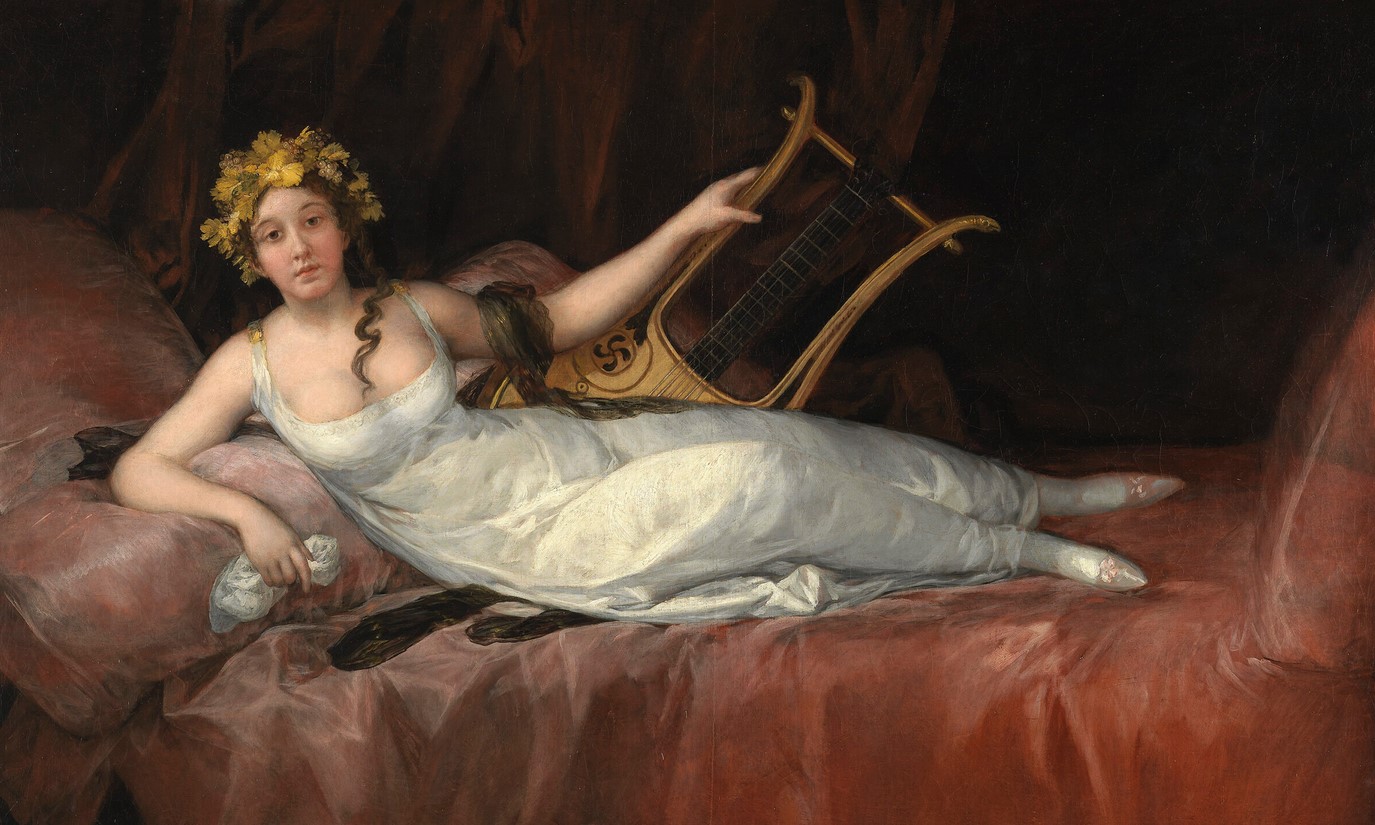
Portrait of Joaquina Téllez-Girón, the Marquise of Santa Cruz, by Francisco Goya 1805
In 1814, following Napoleon's defeat at Leipzig, abdication, and exile to Elba, Lucien wrote to Pope Pius VII requesting permission to return to Italy and a noble title for protection. The Pope allowed his return and formally appointed him Prince of Canino, making Alexandrine the Princess.
Despite his title, Lucien faced severe financial difficulties, forced to sell his Roman properties. His extravagant lifestyle and unpaid loans, particularly those extended to his mistress, the Marquise of Santa Cruz (whose portrait was painted by Goya in 1805), were significant factors.
The brothers' relationship improved during Napoleon's exile. When Napoleon returned to Paris in 1815 for the Hundred Days, Lucien followed to support him in the final battle against the Seventh Coalition and was honored with the Legion of Honour. However, the defeat at Waterloo ended Napoleon's ambitions, consigning him to Saint Helena. The victors permitted Lucien to return to Rome on the condition he remain within the Papal States, where he lived under special surveillance due to suspicions of his involvement with anti-papal secret societies.
In his later years, Lucien focused on his interests in epic poetry and astronomy. In 1824, Pope Leo XII granted him the additional title of Prince of Musignano.
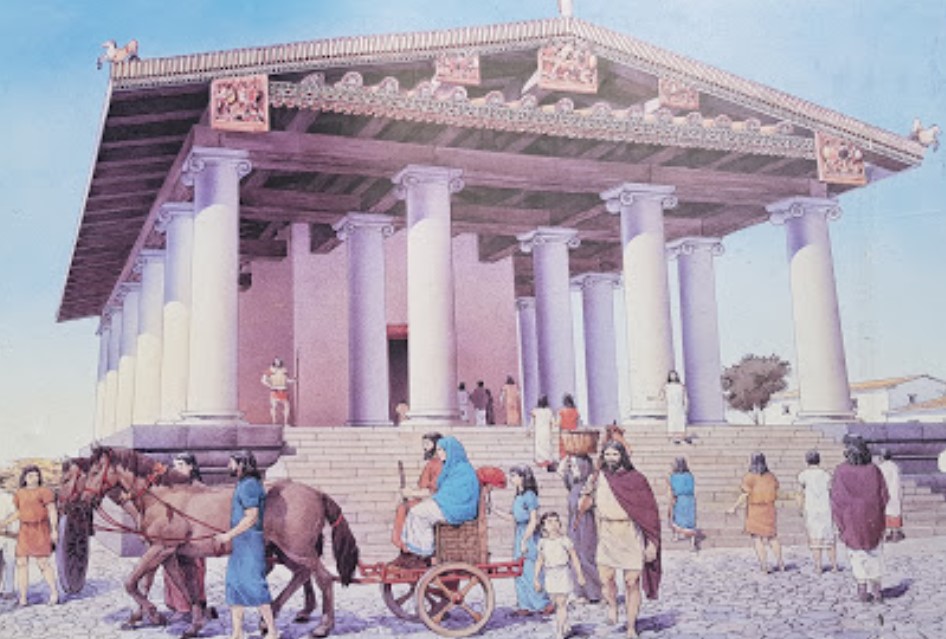
Etruscan temple at Vulci
In 1828, the ancient Etruscan city of Vulci (Etruscan: Velx), near Canino, was discovered on their land. Thousands of ancient tombs were unearthed, and the Bonaparte family's initial excavation yielded ownership of 2,000 ancient vases.

Roman Vulci
Vulci was a wealthy Etruscan maritime city and a member of the legendary dodecapolis (Etruscan League). Its expansion began in the 8th century BCE, and it reached its peak of wealth and influence in the 6th century BCE, becoming a major center for imported Greek art. Its power declined after the Romans took control of its coastal regions, and its significance waned throughout the Roman period. By the 19th century, it was a famous stop on the Grand Tour of Europe.
News of the discovery reached Lucien while he was away. Alexandrine went to Canino to begin the excavations, and Lucien soon joined her, launching the archaeological pursuits of the Princes of Canino. Lucien immersed himself in this new passion. The excavations, funded by the couple, uncovered immense wealth. They preserved and sold the most valuable artifacts to museums and private collections worldwide to generate income, while items deemed less valuable were often destroyed.
In 1836, Lucien began suffering from the same stomach pains that afflicted Napoleon. He died in Viterbo in 1840 at the age of 65. He was interred in the Bonaparte Chapel within the Collegiate Church of SS Giovanni and Andrea in Canino, where he rests alongside his young son, his two wives, and his father, Charles Bonaparte (1746–1785).
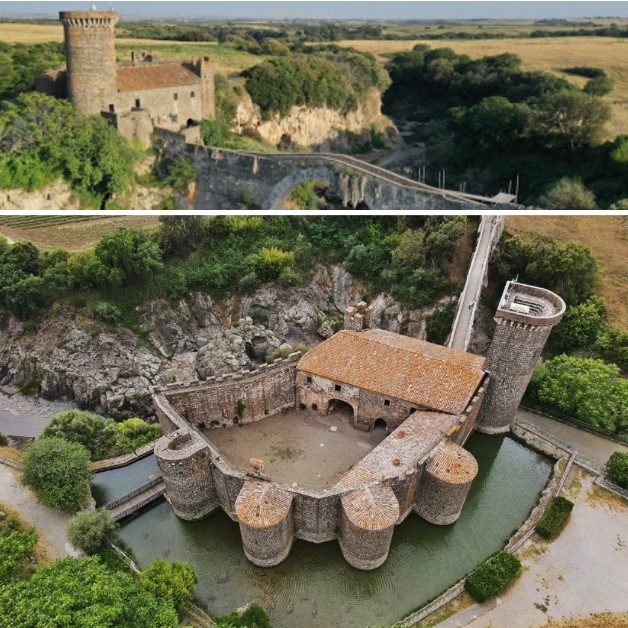
Castle at Vulci
The writer Stendhal calculated that the sale of Vulci vases had yielded Lucien 700,000 francs by 1837, a figure that rose to 1,200,000 francs by 1840. After his death, his family faced serious financial troubles. Excavations halted in 1840 but were resumed by his widow, Alexandrine, until 1846 with varying success, primarily to restore the family's perpetually precarious finances. The Castle of Musignano was sold to the Torlonia family, who still own it today; it remains private property and is not open to visitors.
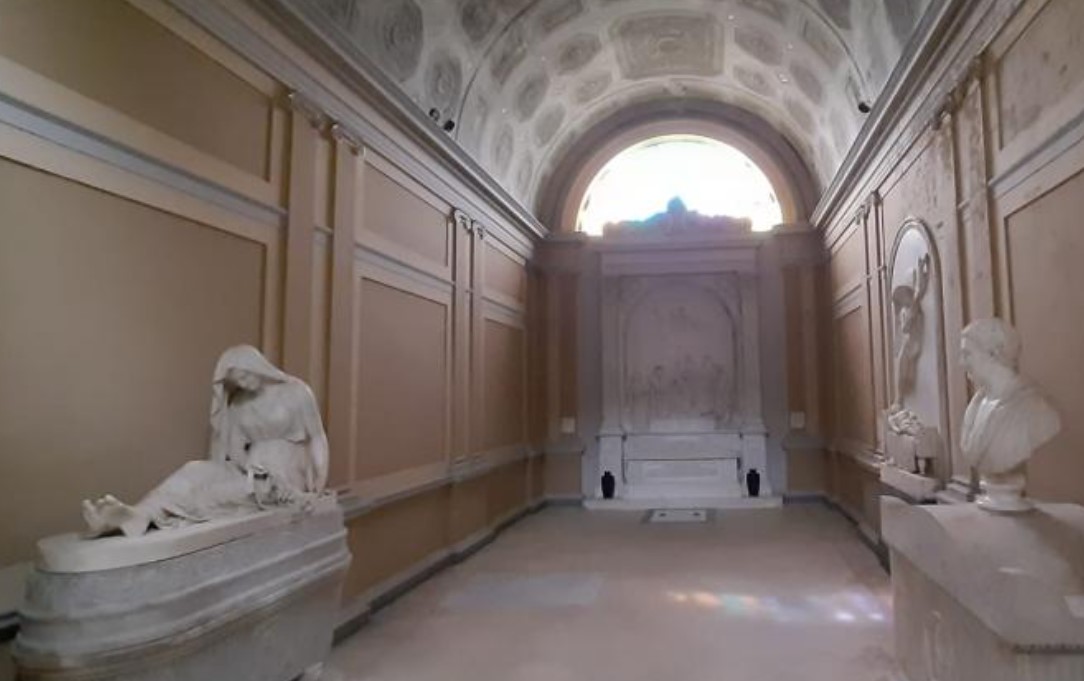
Interior of the Bonaparte's Chapel, Canino
Alexandrine and Lucien had ten children together, and she played a significant role in their upbringing. Their offspring included notable figures like Charles Lucien Bonaparte, a renowned ornithologist, and Louis Lucien Bonaparte, a philologist. Alexandrine de Bleschamp died in Senigallia, Italy, in 1855. Her life was marked by resilience and loyalty, navigating the turbulent political landscape of the Napoleonic era alongside her husband.
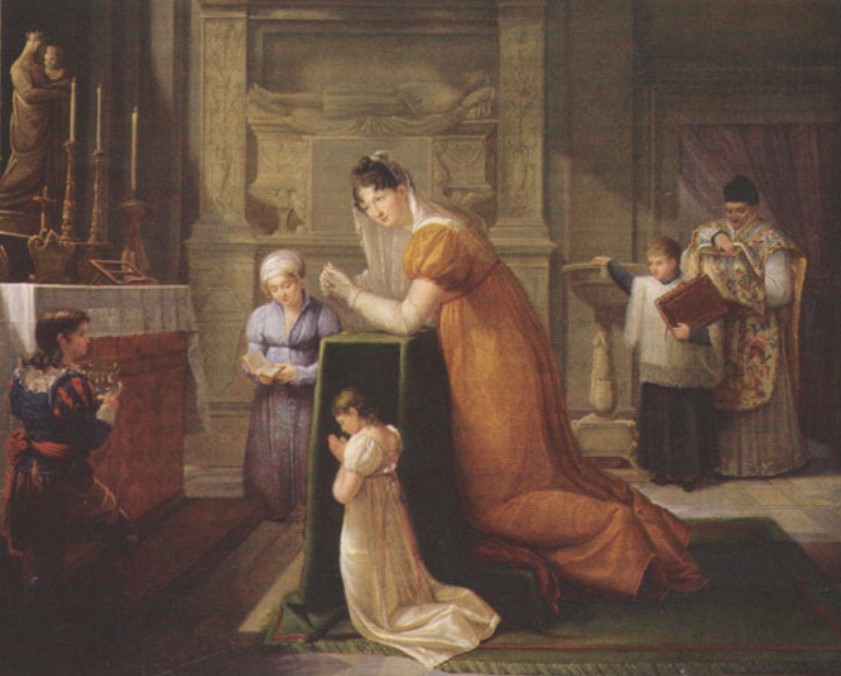
Alexandrine-Charlotte de Bleschamps-Bonaparte in the church of Canino (Painting by Matilde Malenchini 1779-1858) Oil on canvas, 1813
Today, the discoveries made by the Bonaparte couple can be appreciated in museums worldwide. A quintessential example is a red-figure stamnos attributed to the Kleophon Painter, known as "A Warrior Leaving Home."
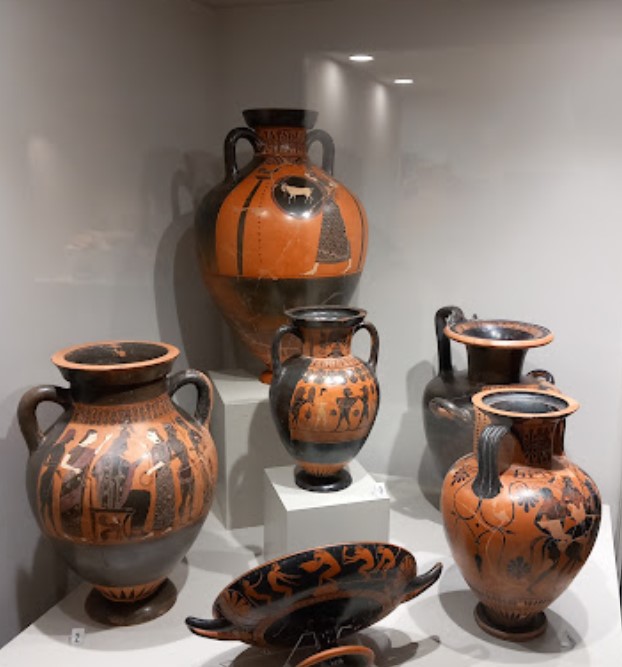
Some discoveries made by the Bonaparte couple in the Castle of Vulci Museum.
Discovered in the Vulci necropolis, this bell krater (dated 450-400 BCE) is an excellent example of a "warrior departure" scene. Side A depicts the nude warrior, flanked by an old man (likely his father) handing him his helmet and a woman (his wife or mother) holding his shield. His robe is draped over the arm holding his spear. Side B shows three youths in conversation.
A stamnos is a large pottery jar used for storing and serving wine, characterized by its foot, wide mouth, lid, and two handles on its shoulders. They were produced in Greece from the late 6th to the end of the 5th century BCE and in Etruria into the 4th century BCE. They are commonly decorated with red-figure or black-figure painting.
The Kleophon Painter is the anonymous name given to an Athenian vase painter who flourished in the mid-to-late 5th century BCE. He is named after an inscription praising a youth named "Kleophon" on one of his vases. A pupil of the Polygnotos workshop, he is known for his themes of Greek mythology, domestic life, and warriors. His figures are often identified by their rounded, triangular eyes and rounded chins. His works, primarily large kraters, have been found as far afield as Italy and Spain, testament to the extensive trade networks of the ancient world that the Bonapartes themselves would later tap into.
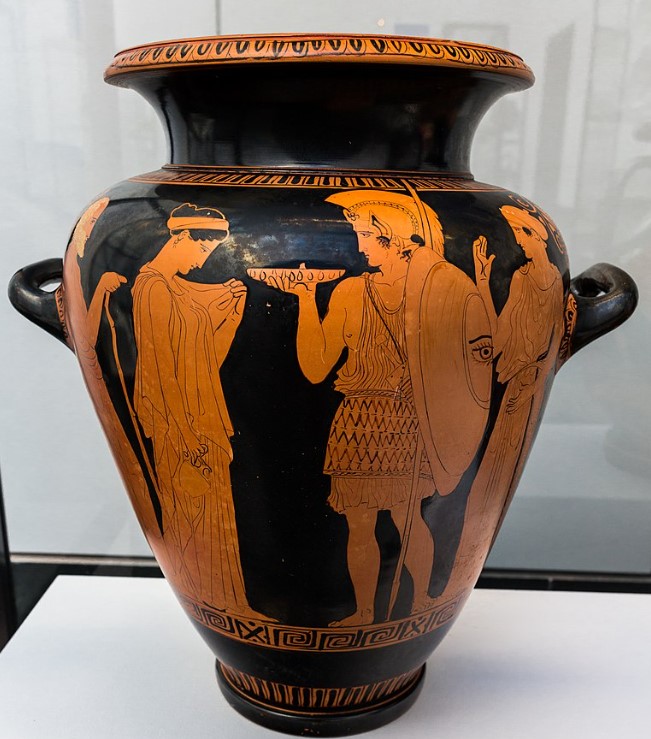
Warrior leaving home. Side A of an Attic red-figure stamnos attributed to the Kleophon Painter: old man with staff (father), woman (wife), hoplite holding phiale, woman (mother). From Vulci, 440–430 BCE, height: 43,5 cm. Staatliche Antikensammlungen in Munich, Germany.
Piazza Costantino De Andreis, 4, Canino (Viterbo)
